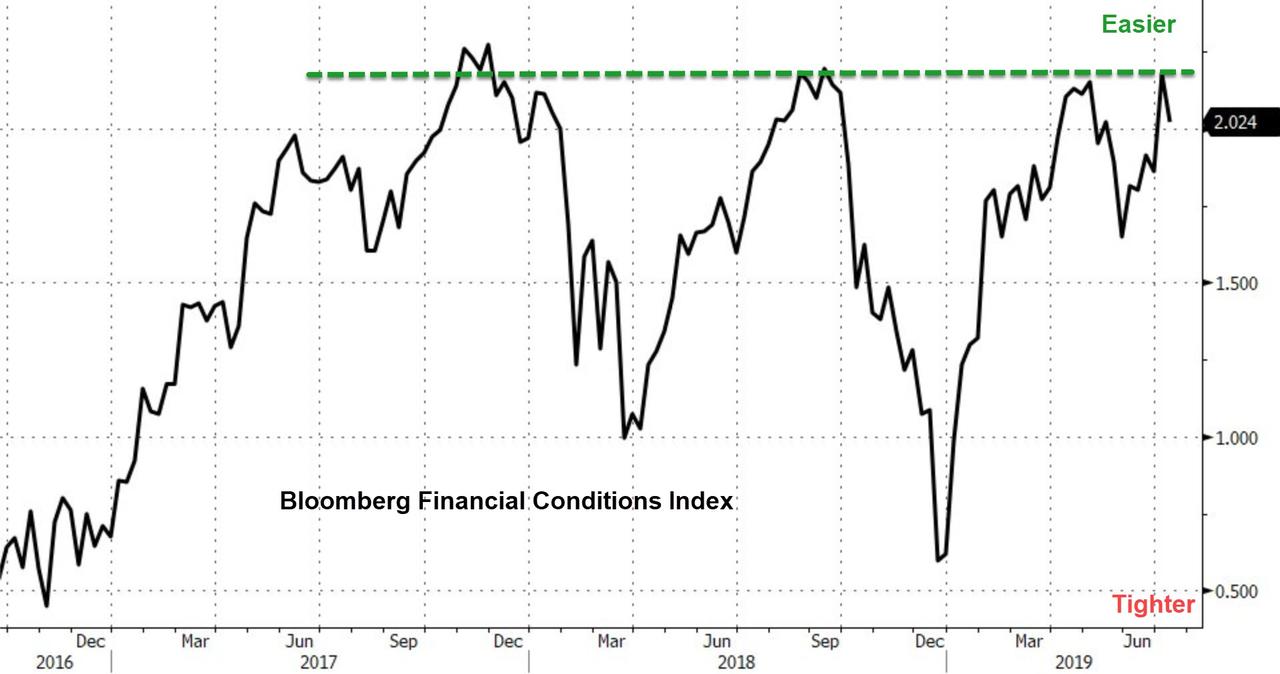Submitted by Joseph Carson, Former Director of Global Economic Research, Alliance Bernstein.
Preemptive or Bubble-Making Monetary Policy
Preemptive actions is an important feature of monetary policy, but policymakers have never made a preemptive move when the economy’s actual performance has been so closely aligned with the Fed’s own expectations or when the financial markets were so robust. If the Federal Reserve lowers official rates at it’s July 30-31 Federal Open Market Committee meeting it would be done based on the view that a modest “preemptive” move now would obviate the need for larger actions later. Yet, the counterargument is that adding liquidity against a backdrop of overly accommodative financial conditions is precisely the tinder that ignites bubbles.
At the December 18-19 2018 Federal Open Market Committee meeting policymakers revealed their forecasts for 2019; 2.3% gain in real GDP, a 3.5% end of year unemployment rate and core inflation of 2%. And based on those economic and inflation forecasts policymakers had anticipated hiking official rates twice (in increments of 25 basis points) over the course of 2019.
During the first half of 2019 the real economy grew 2.3% annualized (averaging the 3.1% growth of Q1 with the 1.4% estimate for Q2 based on GDPNOW forecasting model of the Federal Reserve Bank of Atlanta), the unemployment rate sat at 3.7% in June and the core consumer price inflation increased at an annualized rate of 2.1%. Despite a near home run in all of its forecasts policymakers are now considering lowering official rates. What changed?
One of the arguments that has been advanced is that some policymakers are worried that the consistent undershoot of the 2% inflation target creates the potential for consumer inflation expectations to become unhinged, hindering the effectiveness of monetary policy.
The first problem with that argument is that monetary policy can influence the degree of liquidity in the system, but it cannot guide its direction. The fact that of the monetary liquidity is being channeled into the asset markets (which are not part of the targeted inflation index) does not mean policy is ineffective or that rates need to be lowered to hit an arbitrary inflation target. Given the complexity of the economy and the imprecision in price measurement hitting a 2% target would occur more by luck than by design.
The second problem with that argument is that either consumer’s are unaware of the Fed’s 2% target or that their actual experienced inflation consistently runs higher than reported inflation. Surveys of consumer inflation expectations have consistently shown that people expect more inflation than the 2% target, and only twice (for a very short spell) in the past 20 years did expectations dip below 2% mark and both of those occurred during a crisis (9/11 and Great Financial Recession).
Another argument advanced by the Fed Chairman Jerome Powell is that the economy is facing a lot of crosscurrents. Crosscurrent is another way of saying that some sectors and industries in the economy are growing and others are not. But that’s always true. The Bureau of Labor Statistics includes in its monthly employment report a diffusion index, measuring how many industries are hiring month over month. In normal times the diffusion index runs between 60% to 65% —-which implies an increase in hiring for a broad range of industries but also a large group that are not hiring as well. The June 2019 diffusion index reading stood at 60.7. Normal times?
* * *
Monetary policy is about to enter uncharted territory. Preemptive easing policy actions in the past have been taken when sharp sell-offs in equity markets or stress in the credit markets had the potential to generate adverse economic outcomes. None of those conditions exist today; if anything, financial conditions are too relaxed.
Preemptive policymaking requires a constant and broad assessment of economic and financial conditions so not to risk over doing it one way or the other. Equity prices should figure prominently in this monitoring process since equity prices offer signals on future growth but they are also a receptacle for excess liquidity. The sharp rise in equity prices over the first half of 2019 should tell policymakers that the problems the economy faces are non-monetary related and lowering official rates is not the appropriate policy response. The danger in promising more easy money is that equity prices rise to unsustainable levels creating bigger adjustment risks to the economy that presently exists in low inflation and crosscurrents.
via ZeroHedge News https://ift.tt/2jEv3W8 Tyler Durden
